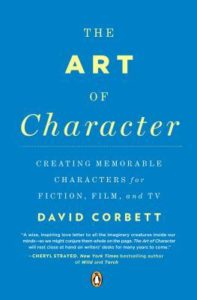
Corbett’s credits are numerous, with several novels and collections to his name, as well as his tenure with Writer’s Digest as a contributing editor. He certainly knows what he’s talking about with characterization. The book is broken down into four parts: Conceiving the Character, which focuses on determining whether characters are created for our stories or discovered first, our source materials for characters, and using personal experience to hone in on a character; Developing the Character, covering dramatic characterization, character desire and how desire affects goals, and how denial of desire affects how characters maneuver and navigate among the other characters, character vulnerability, the secrets we keep and how that affects characters, how characters are contradictory, using scenes to create a biography of your characters, the physical nature of your characters, as well as their psychological make-up and how they fit into society and politics, even bad habits and quirks; Roles, which dives down into choosing your protagonist, framing the conflict, how change affects your character, your characters’ internal struggles, dealing with conflict with an opponent, and secondary characters; finally Technique, which shows you ways to use scenes to balance action and inner life, using point-of-view to your advantage and when you may consider changing it, character voice, and dialogue. Each part is broken into chapters which tackles each of these subjects in a way that’s easy to read and understand.

BOB PASTORELLA
If you enjoyed our Searchlight profile of The Art of Character: Creating Memorable Characters for Fiction, Film, and TV by David Corbett, please consider clicking through to our Amazon affiliated links. If you do you’ll keep the This is Horror ship afloat with some very welcome remuneration.
Buy The Art of Character: Creating Memorable Characters for Fiction, Film, and TV by David Corbett
